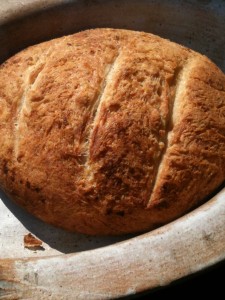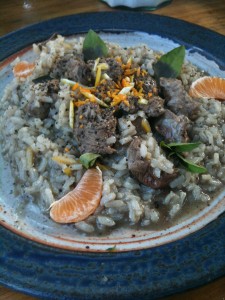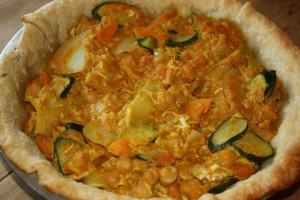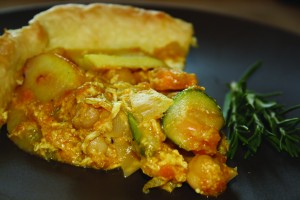Native to Asia, pheasants were introduced as wild game in Great Britain during the 10th century by the Normans and the Romano-British. Although hunted to near extinction in the early 17th century, pheasant was rediscovered as choice game 150 years later. Since then, pheasants have been widely bred and managed by professional gamekeepers. Although pheasant was and still is very popular among nobles, it was illegal for commoners to enjoy the decadent and savory meat. In the case of pheasant, feathers were prized and reserved for nobility; anyone caught wearing pheasant feathers, were labeled as a poacher and were often put to death.
It is no secret that I love cooking and eating game. I been very lucky obtaining pheasant at our local higher-end and Asian grocery stores; they are already cleaned and prepared for cooking, which makes my job as a cook easier. Preparing a pheasant for cooking is usually no easy task. It usually requires removing the skin and feathers, preparing the insides and removing the smaller joints. There are a number of resources available that I like to use including http://www.doityourself.com/stry/cleaning-wild-pheasant#b.
How to Prepare Wild Fowl for Cooking
Below is how my family has cleaned wild fowl for generations. I am aware that many of my readers are may be faint of heart and could not deal with explicit directions on preparing wild bird game for cooking. If you are one of my readers, I would recommend skipping the next paragraph and moving onto the recipe.
Cleaning pheasant is a lot easier than most wild game. The first step of cleaning pheasant is removing the feathers. This can be challenging at times as you would pull the feathers in the opposite direction that they lay. An additional step is to use a torch or lighter to remove any extra smaller feathers. Many people choose to save the feathers for their renaissance costuming needs as they make nice additions to hats and brooches, if your societal station allows it. Next, remove the head, wings and feet with a sharp knife or kitchen scissors. To remove the entrails, carefully cut the abdomen and then carefully scoop out the organs out with a finger; taking special care to ensure the trachea and other neck structures are removed as well. Once the bird’s chest and abdomen cavity are cleaned of the larger debris, rinse the inside and outside of the bird with cold water and it is not ready for the oven.
Ingredients:

1 pheasant, cleaned and skinned
1 lb. of sliced bacon
3 sprigs of fresh thyme
½ tsp of black pepper, fresh ground
½ tsp sea salt
2 tbsp olive oil
1 clove of garlic, minced
Preheat the oven to 350 degrees. In a shallow dish coat the inside of the pan with olive oil; the pan can be metal or ceramic. In a small bowl, add the salt, pepper and minced garlic. Remove the fresh thyme leaves from the sprigs and add the leaves to the small bowl with the other ingredients; dispose of the thyme branches. Take a knife and split the pheasant in half the length way from neck to rear. With your hands, take the spice mixture and apply it liberally to the outside and inside the cavity of the pheasant.
Lay strips of bacon evenly, surrounding the pheasant from top to bottom. The bacon will help keep the pheasant from drying out and some additional flavor to the meat. Lay the bacon-wrapped pheasant in the oiled pan and cover the pheasant before placing in the oven.

The pheasant should bake covered for 20 – 25 minutes. Pull the pheasant out, uncover and put it back in the oven in the opposite direction it was cooking originally for another 10-15 minutes until the bacon is crisp on the outside. The meat should be done, but one can double check by using a meat thermometer and the internal temperature should be 160-165 degrees. The meat should rest for 5 minutes before serving. I usually serve the pheasant with the bacon as they complement each other.
In the photo, I prepared fresh green beans with the pheasant. In the past, I have served pheasant with oven-roasted turnips, parsnips, and carrots to add some additional color to the plate. I usually serve pheasant with a robust red wine.






